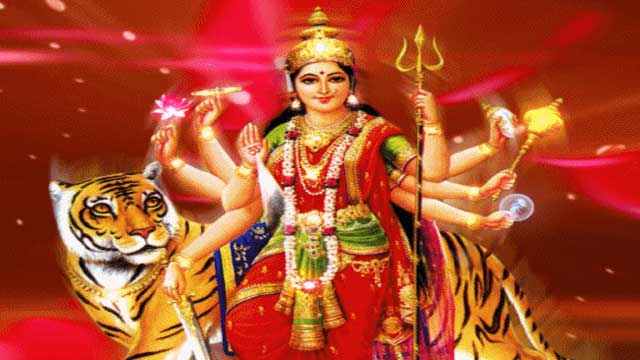 It is that time of the year where Hindus start preparations for celebrating Navaratri, the joyous festival of nine nights, which is dedicated to the Divine Mother Durga. Virtually every Hindu community in the world celebrates Navaratri.
It is that time of the year where Hindus start preparations for celebrating Navaratri, the joyous festival of nine nights, which is dedicated to the Divine Mother Durga. Virtually every Hindu community in the world celebrates Navaratri.
The major story associated with Navaratri is the battle between the great Goddess Durga and the demon Mahishasura, who represents Egotism. To understand this story one must understand the Hindu view of life and society.
 Hinduism views the world drama as a battle between the forces of light and darkness. But the battle is not defined as a battle between different sections of human society on the basis of belief or disbelief in a particular dogma.
Hinduism views the world drama as a battle between the forces of light and darkness. But the battle is not defined as a battle between different sections of human society on the basis of belief or disbelief in a particular dogma.
The struggle takes place between Divine Beings (Devas) and Demonic Beings (Asuras). The divine forces are those that lead to progress; to a grander, more divine society. The demonic are harmful forces that thwart progress, such as Greed, Lust, Envy, etc.
 To us, it may be difficult to think of these forces as real beings, but in reality, forces such as Greed, Wrath, Courage and Love (of several types) are more real and enduring than the human beings who come under their influence. Compared with them, humans are temporary and fleeting.
To us, it may be difficult to think of these forces as real beings, but in reality, forces such as Greed, Wrath, Courage and Love (of several types) are more real and enduring than the human beings who come under their influence. Compared with them, humans are temporary and fleeting.
Devas and Asuras are forces of consciousness that have existed since the beginning of our universe, and indeed in previous universes too.
 In a heightened state of awareness, Hindu Rishis of ancient times saw and experienced the Deva-Asura struggle that underlies the world drama. We ourselves take part in this drama, by being the field through which the various forces act and project themselves.
In a heightened state of awareness, Hindu Rishis of ancient times saw and experienced the Deva-Asura struggle that underlies the world drama. We ourselves take part in this drama, by being the field through which the various forces act and project themselves.
The human heart and mind is in fact a battlefield between these great forces. When Asuric tendencies dominate, animal appetites dominate society.
 When the Devas gain ascendancy in human nature, it enhances aspirations for a larger and deeper life dominated by truth and beauty.The art, literature and great festivals and temples of India are all themed to portray this complex and perpetual Deva-Asura struggle.
When the Devas gain ascendancy in human nature, it enhances aspirations for a larger and deeper life dominated by truth and beauty.The art, literature and great festivals and temples of India are all themed to portray this complex and perpetual Deva-Asura struggle.
They vividly portray the inner world of the universe, which human beings can only become aware of in a heightened state of spiritual awareness achieved through inner purification.
Festivals like Navratri celebrate the ascendancy of the Devas in both our inner nature as well as in society
Why Nine Nights & Days?
 Navaratri is divided into sets of three days to adore different aspects of the supreme goddess. On the first three days, the Mother is invoked as powerful force called Durga in order to destroy all our impurities, vices and defects.
Navaratri is divided into sets of three days to adore different aspects of the supreme goddess. On the first three days, the Mother is invoked as powerful force called Durga in order to destroy all our impurities, vices and defects.
The next three days, the Mother is adored as a giver of spiritual wealth, Lakshmi, who is considered to have the power of bestowing on her devotees the inexhaustible wealth.
The final set of three days is spent in worshipping the mother as the goddess of wisdom, Saraswati. In order have all-round success in life, we need the blessings of all three aspects of the divine mother; hence, the worship for nine nights.































